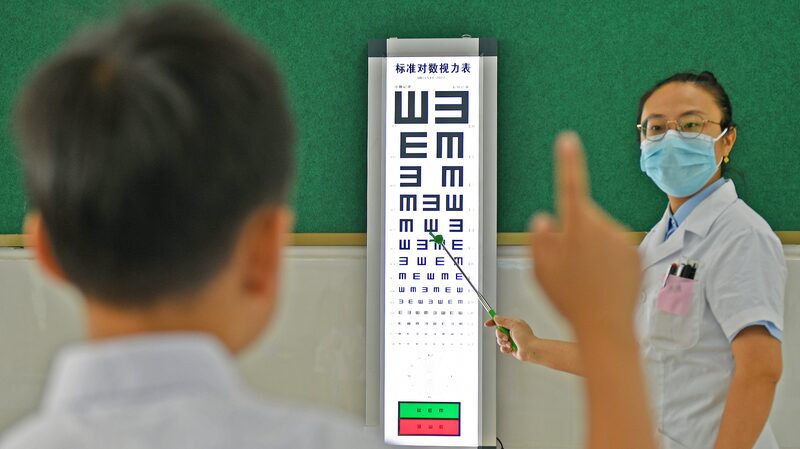BEIJING — On this year’s World Hepatitis Day, Chinese officials and experts highlighted remarkable progress in the prevention and control of hepatitis, an inflammation of the liver that can lead to severe liver disease and cancer.
Infections from hepatitis have shown a steady decline across the Chinese mainland, thanks to enhanced monitoring and comprehensive interventions. Chang Jile, deputy head of the National Disease Control and Prevention Administration, stated that these efforts have significantly curbed the spread of the disease.
Declining Infection Rates
Data reveals a continuous fall in the prevalence rate of the hepatitis B surface antigen, particularly among children under five, where it has been controlled to below 1 percent. Hepatitis B, one of the most burdensome infectious diseases globally, has been a significant public health concern in China.
Li Jian, an expert with the Chinese Center for Disease Control and Prevention (China CDC), noted that the incidence rate of hepatitis A in China dropped from 55.69 per 100,000 individuals in 1991 to 1.06 per 100,000 in 2020. Additionally, the incidence rate of hepatitis E remained relatively low at 1.85 per 100,000 in 2021.
Improved Treatment Outcomes
Treatment for viral hepatitis has also improved, with more patients now receiving standard care. Chang mentioned that the antiviral cure rate for hepatitis C patients has exceeded 95 percent, showcasing the effectiveness of current treatment protocols.
According to the National Cancer Center, China reported approximately 367,700 new cases of liver cancer in 2022. The standardized incidence rate was around 15.03 per 100,000 individuals, indicating a downward trend.
The World Health Organization’s global hepatitis elimination strategy aims to reduce new infections of viral hepatitis by 90 percent and deaths by 65 percent between 2016 and 2030, while increasing the diagnosis rate to 90 percent and the treatment rate to 80 percent.
China’s Comprehensive Approach
In recent years, China has adopted a prevention-first approach, integrating prevention and treatment, with society working collectively to eliminate hepatitis. At a convention promoting World Hepatitis Day and elimination actions, Chang emphasized the importance of this comprehensive strategy.
The country aims to establish a robust disease control system by 2030, with disease control and prevention institutions as the backbone, supported by medical institutions and a safety net provided by community-level medical and healthcare providers, according to a document released in December 2023.
Moreover, the prices of antiviral medications for hepatitis treatment have been reduced through bulk procurement and negotiations. Antiviral medications for hepatitis B are now covered by the country’s basic medical insurance, and medications for hepatitis C have been added to the national list of essential medicines, significantly lessening the financial burden on patients.
Challenges and Calls for Action
Despite the progress, the elimination of hepatitis viruses remains a challenging quest for China. Experts attribute this to factors such as a significant population of hepatitis virus carriers and patients, insufficient capacity of grassroots medical and healthcare services, social stigma concerning hepatitis patients, and low public awareness of hepatitis prevention and control.
Yin Zundong, a researcher with China CDC, indicated that approximately 75 million people are living with chronic hepatitis B in China. Experts are calling for increased efforts in diagnosis and treatment to swiftly identify those who are undiagnosed and untreated, which is crucial for reducing the incidence of severe liver diseases.
Li Jian pointed out that the diagnosis and treatment rates for hepatitis B in China fall significantly short of the WHO’s 2030 targets. Zhang Wenhong, head of the National Medical Center for Infectious Diseases, emphasized the importance of strengthening grassroots medical services, integrating hospitals with disease prevention and control institutions, and fostering multidisciplinary cooperation.
Wang Yu, chairman of the Chinese Foundation for Hepatitis Prevention and Control, called for enhanced management of hepatitis patients throughout the course of the disease, as well as early liver cancer monitoring among those with chronic hepatitis.
According to the latest reform resolution adopted earlier this month at the third plenary session of the 20th Central Committee of the Communist Party of China, efforts will be made to improve the country’s public health system, promoting collaboration and integration between hospitals and disease prevention and control institutions.
The country will also boost capacities for disease monitoring and early warning, risk assessment, epidemiological investigation, testing and inspection, emergency response, and treatment.
Reference(s):
cgtn.com








